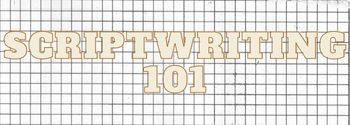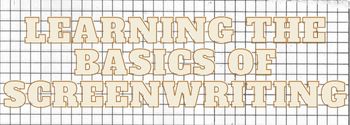There are a few things to keep in mind when writing flashbacks into your script. First, flashbacks should be used sparingly—too many can slow down the story and confuse the reader. Second, flashbacks should always be pertinent to the plot or character development; they should add insight or further the plot, rather than simply recounting past events.
To write a flashback effectively, start by indicating that the scene is taking place in the past. You can do this by using flashback cues such as “memory,” “remember,” or “not now.” Then, briefly introduce the scene and set the stage. Once you’ve established the scene, it’s important to stay focused on the flashback and not drift back into the present. You can do this by using flashback cues such as “ flashback ends,” “return to the present,” or “that was then, this is now.”
It’s also important to be concise in your flashbacks. Avoid including unnecessary details and focus on the most important elements of the scene. This will help keep the flashback moving and ensure that it doesn’t slow down the story.
flashbacks can be a powerful tool for exploring character development and adding depth to your story. When used correctly, they can help the reader understand the characters’ motivations and why they behave the way they do.
How do you format flashback in screenwriting?
There are a few different ways to format flashbacks in screenwriting, but one of the most common is to use italics to indicate that the scene is a flashback. In general, flashbacks should be used sparingly, as they can be confusing for the reader.
One way to use flashbacks is to have a character think back to a specific moment in time. This can be a useful way to provide backstory or to show the character’s emotional state in the present. For example, in the movie “The Help” one of the characters, Skeeter, thinks back to a moment when she was a child and her mother was cooking dinner. This flashback is used to show Skeeter’s feelings of nostalgia and longing.
Another way to use flashbacks is to have a character narrate a story from the past. This can be a useful way to show the audience the character’s history or to provide more information about the story. For example, in the movie “The Notebook” the character Noah tells the story of how he and Allie first met. This flashback provides more context for the story and helps the audience understand the characters’ relationship.
There are also times when it can be effective to use a flashback to show a scene that is different from the main plot. For example, in the movie “Pulp Fiction” the character Butch Coolidge has a flashback to when he was a child and his father was beating him. This flashback is used to show the origin of Butch’s violent tendencies.
Ultimately, it is up to the writer to decide when and how to use flashbacks. However, it is important to be mindful of how flashbacks can affect the pacing and structure of the story.
How do writers introduce flashbacks?
Introducing flashbacks into a story can be a tricky task for a writer. Done well, flashbacks can provide depth and insight to a story, but done poorly, they can confuse or disrupt the flow of the narrative.
There are a few methods that writers can use to introduce flashbacks into their stories. One is to use a character’s memory to provide backstory or to reveal information that is not otherwise accessible to the reader. This can be done through dialogue, as in the following example from Toni Morrison’s novel Beloved:
” ‘He used to bring me rabbits,’ she said. ‘With long ears.'”
Another way to introduce flashbacks is to use them as a framing device, as in the following example from Margaret Atwood’s novel The Blind Assassin:
“This is the story of a suicide. Or it would be, if I could tell it.”
By using a framing device, the writer can provide context for the flashback and help to keep the reader oriented in the story.
A third way to introduce flashbacks is by using them to show the character’s current state of mind. For example, a character might be reflecting on a past event that has had a significant impact on their life. This can be done through interior monologue, as in the following example from Bret Easton Ellis’s novel American Psycho:
“I wanted to go back to that night, the night I killed Paul Owen. I wanted to go back to the beginning and relive it, enjoy it, wallow in it.”
By using flashbacks in this way, the writer can give the reader a deeper understanding of the character’s motivations and thoughts.
Ultimately, the best way to use flashbacks is to make sure that they are relevant to the story and that they add something to the narrative. If they are used sparingly and effectively, flashbacks can be a powerful tool for writers.
How do you indicate a flashforward in a script?
A flashforward is a scene that takes place in the future. It is often used to give the audience a glimpse of what is to come. Flashforwards can be used to foreshadow future events or to show the consequences of the characters’ actions.
There are several ways to indicate a flashforward in a script. One common way is to use a heading that reads “FLASHFORWARD.” This will let the reader know that they are about to read a scene that takes place in the future. You can also use a slugline that reads “FLASHBACK” or “FUTURE.”
Another way to indicate a flashforward is to use a different font or color for the text. This will help the reader differentiate between the present and the future scenes.
Flashforwards can be used to great effect in scripts. They can help keep the audience engaged by providing them with a glimpse of what is to come.
How do you write a flashback in a script in final draft?
A flashback is a technique often used in screenwriting to break up the action and reveal relevant backstory information to the audience. Flashbacks can be used to provide exposition, to develop character, and to advance the plot.
When writing a flashback in a screenplay, it is important to be specific about when and where the flashback takes place. You should also include a scene heading that indicates that the scene is a flashback. For example:
INT. FADE IN:
SCENE 12
A flashback in scene 12
When including a flashback in your screenplay, it is important to make sure that the flashback does not disrupt the flow of the story. The flashback should be relevant to the plot, and it should be clear to the audience why the flashback is being shown.
Flashbacks can be a powerful tool for storytelling, but they must be used sparingly. If used improperly, flashbacks can confuse the audience and disrupt the flow of the story.
How do you write a flashback scene?
A flashback scene is a device used in storytelling to provide exposition or backstory to the current story. Flashbacks can be used to fill in gaps in the plot, to provide backstory for a character, or to show the character’s development over time.
There are a few things to keep in mind when writing a flashback scene:
– The flashback should be relevant to the current story.
– The flashback should be brief and concise.
– The flashback should be clearly marked as a flashback, so that the reader knows to pay attention.
– The flashback should be consistent with the tone and style of the rest of the story.
Here’s an example of a flashback scene from the novel “The Catcher in the Rye” by J.D. Salinger:
“If you really want to hear about it, the first thing you’ll probably want to know is where I was born, and what my lousy childhood was like, and how my parents were occupied and all before they had me, and all that David Copperfield kind of crap, but I don’t feel like going into it all tonight.”
This flashback scene provides backstory for the main character, Holden Caulfield, and sets the stage for the rest of the novel.
Do you write flashbacks in italics?
Whether you should use italics when writing flashbacks has been a topic of debate for years. Some people believe that you should use italics to indicate that a scene is a flashback, while others think that it’s unnecessary and can actually be confusing for readers. So, what’s the right answer?
The truth is, there is no right answer. Some writers choose to use italics when writing flashbacks, while others don’t. Ultimately, it’s up to you to decide what works best for your story.
There are a few things to keep in mind, however, if you’re considering using italics for flashbacks. First, using italics can be confusing for readers if you don’t use them consistently. So, make sure you always use them in the same places, or else readers may get confused.
Second, using italics can also slow down the pacing of your story. If you’re trying to keep your story moving at a fast pace, then you may want to avoid using italics for flashbacks.
Ultimately, the decision of whether to use italics for flashbacks is up to you. If you feel like they’re necessary to help readers understand your story, then go ahead and use them. If you think they might slow down the pacing of your story, however, then you may want to avoid them.
How do you format a flashback in final draft?
When formatting a flashback in final draft, there are a few things to keep in mind. First, make sure that the flashback is introduced properly, so that the reader knows that they are stepping into a different time period. Secondly, make sure that the flashback is clearly labeled as such, so that there is no confusion about when the story is taking place. Finally, make sure that the flashback flows smoothly and does not disrupt the flow of the story.
How do you write a memory flash in a script?
There are a few different ways that you can write a memory flash in a script. One way is to use the
#include
int main() {
char buffer[100];
printf(“Enter some text: “);
fgets(buffer, sizeof(buffer), stdin);
printf(“%s
“, buffer);
/* Write the text to the memory flash */
return 0;
}
How do you introduce a flashback in writing?
When you’re writing a story, you may find it necessary to flashback to a previous event in order to provide more context for the current scene. There are a few techniques you can use to introduce a flashback in your writing.
One way to signal a flashback is to use a different point of view. For example, if your story is usually written in first person, you may switch to third person to provide some context for a previous event. This can be a effective way to show the reader what happened without actually stepping into the character’s head.
Another way to introduce a flashback is to use a separate section of the story. You can start by introducing the flashback at the beginning of the section, or you can wait until later in the section to provide more context. Either way, it’s important to make it clear to the reader that they’re reading a flashback.
You can also use flashback devices, such as flashbacks within flashbacks, to help the reader keep track of the different time periods. Just be sure to use clear markers to indicate when the flashback is taking place.
No matter which technique you choose, it’s important to be clear and concise when introducing a flashback. The last thing you want is for the reader to be confused about what’s happening in your story.
How do authors use flashbacks?
A flashback is a moment in a story when the narrative jumps back in time to reveal a previously hidden event. Flashbacks can be used to provide exposition, develop character, or advance the plot. They are often used to reveal crucial information that the protagonist would not otherwise know.
There are a few different ways that authors can use flashbacks. One common technique is to use a brief flashback to introduce a character or setting. For example, a character might be introduced with a brief flashback to a moment from their childhood. This technique can be used to provide some backstory or to establish the character’s personality.
Another common use of flashbacks is to show a character’s memories of a past event. This can be used to shed light on the character’s motivations or to explain how they came to be in the current situation. Flashbacks can also be used to reveal secrets or to show the audience something that the character themselves is not aware of.
A flashback can also be used to show a scene that takes place before the current timeline of the story. This can be used to establish the setting or to provide some context for the current events.
There are a few things to keep in mind when using flashbacks. First, it’s important to be careful not to confuse the audience with excessive backtracking. It’s also important to make sure that the flashbacks are relevant to the story. Flashbacks should be used sparingly, and only when they are necessary to further the plot or to develop the characters.
How do you describe flashbacks in creative writing?
There are many ways to describe flashbacks in creative writing. One way is to use sensory details to help the reader experience the flashback as if they are right there with the character. You can also use dialogue to help the reader understand what is happening in the flashback. Finally, you can use flashback markers to let the reader know that they are reading a flashback scene.
How do you introduce a memory in a story?
Introducing a memory in a story can be a tricky task. Here are a few things to keep in mind:
1. Establish the memory early on.
It’s important to introduce a memory early on in the story, before the plot has a chance to take over. This will help the reader to better understand the character’s thoughts and feelings.
2. Make sure the memory is relevant to the story.
The memory should be relevant to the plot and help to further develop the character. It should also be believable and something that the reader can easily relate to.
3. Use sensory details to bring the memory to life.
When describing a memory, use sensory details to help the reader visualize what’s happening. This will make the story more immersive and engaging.
4. Avoid info-dumping.
It’s important to not overload the reader with too much information at once. Instead, gradually reveal the details of the memory, allowing the reader to piece it together gradually.
How do you show flash forwards in writing?
One of the key ways to show a flash forward in writing is to use a transitional phrase such as “the future looked promising” or “the days ahead were uncertain.” This will help to let the reader know that the current scene is not the end of the story. You can also use action or dialogue to hint at the events that will take place in the future. For example, if your character is talking about a plan, you can use a line like “I can’t wait to see the look on his face when I finally succeed.” This will give the reader a sneak peak of what is to come.
How do you indicate a flashback in a screenplay?
When writing a screenplay, there are a few ways to indicate a flashback. One way is to use a slugline. A slugline is a line that appears at the top of a scene indicating what type of scene it is. For a flashback, you would use a slugline that reads “FLASHBACK.” Another way to indicate a flashback is to use a transitional device such as a dissolve or a fade to black.
What are some examples of flashforward?
Flashforward is a narrative device that briefly presents a scene from the future. It is often used to tease the audience with a glimpse of what is to come, or to reveal a character’s future intentions.
Some examples of flashforward scenes include:
-A character dreaming of a future event -A character witnessing a future event -A character travelling to the future -A character communicating with people from the future
Flashforward can be used to create suspense or to foreshadow future events. It can also be used to explore the consequences of a character’s actions.


